The Royal Ballet's leading ballerina Tamara Rojo was holding a large and not old but already battered diary when we met, pages and dried flowers falling out of it, along with notes and photographs. It’s barely a book, more a pile of loose papers, but it is the 10-year diary with which this extraordinary performer, still only 35, intends to see out her dancing career, and move on to her next.
She will spend next week nightly on stage at the Opera House's Linbury Studio Theatre in a new ballet created for her at the Royal Ballet by Kim Brandstrup, set to Bach’s Goldberg Variations. It will be, unusually considering Rojo's reputation as a dramatic ballet actress, but certainly in keeping with one of the factors that makes her so outstanding a dancer, a pure musical piece.
Choreographers don’t just create to order, it takes a remarkable stage personality to excite them and make them feel they can give of their own best, and the ballet they make is almost always a portrait in some way of this muse. Rojo is celebrated worldwide for her phenomenal dramatic powers and for her incredible terre-à-terre technical virtuosity, but the reason she has these powers is because of the person she is.
I think this diary is going to contain the rest of my dancing career. It ends in 2016
ISMENE BROWN: Why have you got a 10-year diary?
TAMARA ROJO: I think this is going to contain the rest of my dancing career. The diary ends in 2016. I think that’s enough. Actually I was given it at the Tokyo Festival in Japan, and I thought, that’s not a bad date. So I’ve been using it as my diary and really everything goes into it. It’s easier to write down my shows if they’re booked a few years ahead, and I find flowers and then I put them in the wrong place, and I get upset.
What about in 2016?
Nothing yet! But I think it’s a good date to stop. I’ll be 41.
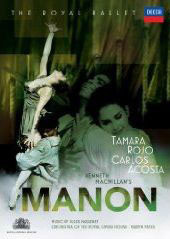 This last season has given you some milestone roles, like the revival of MacMillan’s Isadora (edited by his widow, Lady Deborah MacMillan), Mats Ek's Carmen, and the filming of MacMillan's Manon and Petipa's La Bayadère for the Royal Ballet.
This last season has given you some milestone roles, like the revival of MacMillan’s Isadora (edited by his widow, Lady Deborah MacMillan), Mats Ek's Carmen, and the filming of MacMillan's Manon and Petipa's La Bayadère for the Royal Ballet.
This year has been really good for me. Isadora was something I had been waiting a long time for. As an artist for me, the role is a fantastic thing, really great, and it’s relentless as well, you are never in the wings. You are constantly there, living the action, which makes it far more real. For example, in [Ashton’s] Marguerite and Armand, one of my favourite ballets, the jumps in time in the scenes are so huge that you don’t develop the character in stage action - you have to do that in the wings. It’s much harder to pull off. It is beautiful to see and wonderful to do.
And also I got to record Manon and La Bayadère, two fantastic opportunities. I am thrilled. And I’ve already done Romeo and Juliet. It’s lovely for me that I am up there filmed in three big ballets.
Another thing this year was that I’ve been working a lot with Roland Petit, which I always wanted to do - on his Coppélia (staged in Tokyo this summer). His version is the same scenario that we know but far more French and light-hearted. It is Roland, after all. Sex is always in there, somewhere!
And now you have a new creation for you by Kim Brandstrup.
It’s the Goldberg Variations, to be played live, one piano on stage, one piano out, It’s a window into the Bach, in a way. It’s more about the intimate relations of music and dance. We always wanted to work together, and I said to Deborah [Bull, creative director of the ROH2 programme in the Royal Opera House’s Linbury Studio Theatre] I would be more than happy if we could have a go.
You performed a lead role in Rushes, his creation last year for the Royal Ballet, and it’s coming back next spring.
We worked together on Rushes, but I was second cast.
Except that the two casts were needed to create the whole work - each completing the other, with different choreography and different dramatic balances.
Yes, physically the casts were totally different - Carlos and Tom [Whitehead[, and Laura [Morera] and me, so it did come out totally different.
As Kim said, the two casts made absolutely different ballets. To me Laura was being manipulated by Carlos, but Tom was being manipulated by you.
Well, to me this character in the book that Kim based it on [Dostoevsky’s The Idiot] is a very manipulative character, very strong, very disturbed. Like all bullied people she’s a bully herself. I started from there. It felt so nice to feel that altered dynamic between the woman and the man, that for once it wasn’t the woman being fragile, but you saw how men can be so fragile, and women can be so clever and manipulative. We discussed the idea of a new piece before Rushes, though. It’s taken a year and a half to find time when we’re both free and the Linbury is available to get it together. Kim chose the music. At the beginning we were thinking of something Spanish reflecting me or Danish reflecting him. But one day I went to see the Bach Partitas played at the Festival Hall by Murray Perahia, and I came back in love with this man and how he played. And Kim said, 'I know him, I’ll ask him!' I said, 'I don’t believe you.' But he did. But Perahia was busy, and he said he knew someone else who played Bach really well. And so we got into that, and it became the Goldberg Variations.
And then in November you’re taking what is a highly unusual step for a prima ballerina - you’re going on a course for training artistic directors in Canada.
Yes, I’m being sponsored to spend a month there, because that’s what I eventually want to be.
What attracts you to this horrendous job? You’ve seen the hurly-burly of artistic directors in UK ballet companies - at English National Ballet and the Royal Ballet, both companies you've danced with, you’ve seen this parade of Derek Deane, Matz Skoog, Anthony Dowell, Ross Stretton... you know how tough it is up there.
It’s tough yes. Well, I think... I’m afraid of sounding arrogant, but I think I may have something to give, precisely because of my background. Because I have gone through so many different directors and so many different companies. And because I have a genuine love of what I do. And I had opportunities to work with many people and now I have so many friends in the international scene. People like Manuel Legris and Laurent Hilaire [principals of Paris Opera Ballet, now moving into directing], people like Masha [Alexandrova, the Bolshoi ballerina], Ulyana [Lopatkina, the Mariinsky prima] - we are genuine friends, because we keep meeting in galas. So I know everyone, I know the connections.
But the most important thing is that I believe it is time to try to recreate the Golden Era of dance, to stop being so isolated as an art form, and to try to put together different art forms, to collaborate, and try to create again an art that is alive. It’s very important to keep a tradition, but we need to create a future for tradition too. The traditions in England are very young, they’re only 50 years old. But where is it going in the next 20 or 30 years? I think I might be the right person eventually to look at this point. Also it’s not because I want to keep dancing. I am really preparing now for the next stage. I’m going to Canada on this directors’ retreat, I’ve done my arts degree in the university of Spain, I’m going to do my doctorate in the next couple of years, I am studying towards this. And also finding the people I want to have around eventually to collaborate with.
I am very excited about it. Too excited! That’s why I have this diary, because I need to finish, I need to dance until then. Because once I let go, like you let go of a balloon, it’s gone, you can’t go back. So it worries me in a way that I am so excited about the next step. I want to have no regrets.
And you still have that great hunger to dance?
Well, it’s strange. I’ve been teaching too at the Royal Ballet School for the last three years, and I love that feeling. I love developing people. I think a ballet company needs to be a platform for every artist individually to develop to their full potential, rather than some kind of merchandise that involves everybody in the same way. That doesn’t create art. You need to allow people to take risks, to let people take a year off to do something different that may develop them, but always keep the home open for them. Like Thomas Whitehead [who left the Royal Ballet temporarily to star in a recent tour of Matthew Bourne’s Swan Lake]. Part of the great privilege of being a principal is that we get that unique opportunity to go away and dance somewhere else and work with different people., and then bring back this experience. Hopefully we come back wiser, and with less doubts.
As an artistic director you will have to get the programmes right in order to draw the public in.
Get the artists right. Growing them up right.
But programming is a key thing for the audience. The Royal Ballet has lacked vision and energy for a long time there. That side is a huge responsibility. Yet what about Paris Opera Ballet? They’ve been criticised for being too modern in recent years and losing their classical strength.
But I think in a way that is what a state company should be. That money has been given to you by the state, and in a way you should therefore take more risk. You have that safety net. So in a way it’s more courageous that Paris do this. They do - what? - 15 new pieces a year... And say, okay, only five are good? Well, five good pieces a year! That’s amazing. That came from Nureyev. He was always picking on the next amazing thing and surprising people. And that’s scary because you’re going to be put down when it doesn’t come off, but you cannot be safe all the time.
The only way it works is if your classical base is tip-top.
Absolutely. Yes the technical base has to be brilliant. I had a fantastic schooling in Spain actually from Victor Ullate. There is a national conservatoire, but they don’t have like here the normal schooling inside it or boarding - children have to go to normal school and come in for the ballet training.
You have talked in the past about your idea of launching Spain’s first proper classical ballet company. How do you account for the fact that there isn’t a truly national ballet there - despite this astonishing number of first-class ballet dancers, yourself, Angel Corella, José Martinez, Lucia Lacarra and so on?
I think the problem is with the political system, everything is directed from the government. The government creates something, the Culture Minister is changed, and he changes everything done by the previous one. Then they lose the next election two years later, and again everything starts again. Nothing is created in the long term, nothing is given independent life. Everything is always being manipulated for electoral reasons, to create an image. If it’s a lefty government it goes for contemporary dance, if it’s right-wing, it goes for classical dance - without actually any knowledge of what they’re talking about, because at the end of the day they’re just politicians. And nothing is built in the long term. I’ve had three meetings with three different Culture Ministers in the past six years, but where does that go? I’ve sat down with them and discussed how it should be set up in the light of what companies do in other countries, UK, Canada, Holland, how directors should not be appointed by political people... all these things. It’s hard to say exactly it’s about corruption but it’s not exactly a clean system there where things are decided for the right reasons, like who runs a company. The first thing they have to change is their willingness to honestly provide art for the people, for art’s sake, not as a tool for the next election.
Is the Italian system different? They do manage to have La Scala and Rome ballets, both with international reputations.
But always the same dramas, directors that last one year, same problems, unions that can’t be handled, companies with 100 dancers but no proper artistic choices and you have to hire guest dancers. I think really the best company setup in the world is here in the UK. The Arts Council, a genuine group of people not touched by political ideology. And their ability to judge what project you get money for, with - hopefully - no agenda other than art. Spain might start a ballet company, but two years later the director gets thrown out. We did have a good ballet for a while, when Victor was director, then Maria de Avila was director, and Maya Plisetskaya was director - and there was amazing guests there, Julio Bocca when he was only 20, and Peter Schaufuss constantly, and that’s how he discovered Trinidad Sevillano, and Arantxa Arguelles. It was a live company! And then the government changed and it was chucked out, put into boxes, and never used again.
So the public in Spain is never given the chance to build up a long relationship with ballet itself, get to know it.
No. Never. Because all they see is companies that come and go for one week, generally the cheaper companies, because that’s all the producers will bring. Very rarely do they see a great company. I think when the Royal Ballet visited Madrid about six years ago it was the first time for about 11 years. A huge amount of years. How can a public build any knowledge of repertoire, and how different ballets are with different interpretations? People there see Swan Lake once, and say, 'Ah, I know ballet.' The public never gets offered the chance to see that 10 Swan Lakes with different dancers and different productions are 10 completely different experiences.
What do you think of Ninette de Valois?
One of my favourite all-time heroines, totally amazing. She was an extremely smart woman, with a very clear focus, and really clear mission. Amazing what she achieved, all of that. I read that book about Lydia Lopokova, The Bloomsbury Ballerina [by Judith Mackrell, Weidenfeld & Nicholson, 2008], and it wasn’t just Ninette on her own, it was the era, the fact that all these people were working towards creating new things, and the involvement of the Royal family too was so important. The history of dance in the UK is a miracle, an amazing miracle driven by very intelligent, creative people, like Constant Lambert, the music director - another visionary. None of them comes across as safe and stay-at-home.
The thing is that quite often things have to get to quite a low point before it’s accepted that change is needed. What strikes me as a constant dancegoer is that the public now tends to strikes poses about what they like - contemporary is for the fashionable, ballet is for those who won’t consider modern dance. And people in both camps seem afraid of actually looking into what they’re seeing and how they feel about it. It’s as if novelty for its own sake is what matters.
New for the sake of new has no value. But then look at Diaghilev - everything had only six performances, and then on came the next thing. But I’m sure there must have been some atrocious creations!
On the other hand you did have fabulous scores and artworks. So you might have a bad ballet, but some fantastic other thing to reuse.
Yes, like a Bakst set or a Debussy score. Don’t get me wrong. The classics are in my opinion immemorial. We don’t exist without Petipa, without the Romantics, without ballet technique. You can only create from what you know inside out. That’s why Balanchine was such a genius - he knew exactly what he was doing. Only someone who knows exactly where something comes from can make a truly memorable new thing with it. Or they’re just improvising.
You have worked with choreographers, though, who don’t know the ballet base.
But I know it very well, and I know what I am doing with my body. I tend to think sometimes even very experimental choreographers tend to be at their best when working with very good technical dancers, and you can see it. Because we know exactly what we are doing with our bodies and with the technique. I think in the same way you can see in many ballets that have survived that they had Nijinsky or Karsavina performing in them, or Misha Baryshnikov, or Rudolf, or Lynn Seymour - they started with such amazing talented people and that’s what you see in the choreography.
Do you see contemporary talents who could be used in the Royal Ballet, the same way that modernists are so much used in Paris?
I don’t see why not. I do go out all the time, and see everything I can. I would love to work with DV8. I would give them my blood. If they want me, I would love to work with them. But there are many talented people in the UK. Sadler’s Wells has done a great job of putting people forward, and in a way opening up the dance to contemporary arts. This humungous range of little companies in the UK. I absolutely love George Piper Dances, taking ballet in a completely new public generation, cutting through into media and TV, intelligent people. I am never tired of seeing those two.
And think of what Sylvie did.
Yes, with Akram Khan, and the things he’s done with the National Ballet of China dancers [bahok, at Sadler's Wells 25-26 September 2009], and with the French actress [Juliette Binoche]. Why not?
That could only happen in London, with the backing of the Arts Council.
Exactly, with the backing of the Arts Council and the very dynamic theatre scene in London and the amazing public that always goes to see new things.
What about theatre directors with an interest in ballet, are there walls up between these arts?
No, I know Michael Grandage, he’s very interested in one day directing a ballet. Also Richard Eyre, I talked to him about if he was interested in a collaboration, he said yes. All these people are interested, but we don’t make the move. They see us as performing an iconic, beautiful kind of thing that happens at Covent Garden, but they don’t really know us as individual performers, and they are surprised if you go and say, 'Would you be interested in doing something?' They always go 'yes!’
Is it because dancers are seen as non-verbal, so it’s a preconception theatre people have that stops them making contact.
No, actually I think theatre people are far more openminded than we are. They see much more than we do. It’s not what dancers think of theatre, it’s what dancers think of dance. We isolate ourselves, we think, 'Oh no we can only do this, we shouldn’t go there or try that,' - we make our own world smaller than it needs to be. I have a lot of friends in the arts, like Norman Rosenthal or Jay Jopling, who say, ‘I know someone who could design you something for this thing you were thinking about.’ And it’s like, ‘Fantastic! I’ll call you!’ So I think it’s we ourselves who isolate ourselves.
Actually it’s a lot to do with how tiring our job is, how demanding, guarding our energy. When I started I was very reluctant to do anything the day before a show or even have dinner, or see a different sort of performance on a night off. I would go home and read instead. Of course, there’s no way I’ll go out the day before something as demanding as a Sleeping Beauty to see the opening of anything. But some shows now I know very well, and so I’ll go and see a new opening in Tate Modern, and I’ll let myself have an hour there to chat and learn about it from other people. Now, in a way, I need it as an artist. I think I need that kind of inspiration, it’s no longer enough just to sit at home. Or my interpretations will just become an imitation of myself.
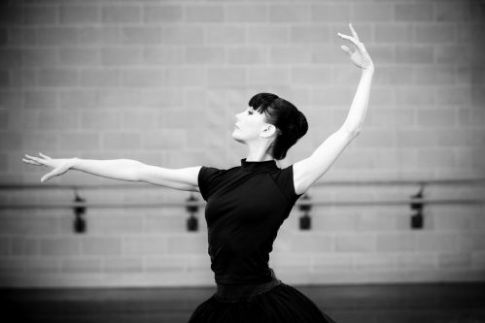
Your parents were very interested in arts?
Yes. My father is an industrial engineer, my mother was administrative director of Burger King in Spain for a while. We had no television until I think I was eight or nine because my father believed it was the imperialist way to corrupt us. He was quite lefty when he was young. I was an only child so I spent a lot of time reading, and any music I could find I would dance to, Vivaldi, any opera, all the way through. I liked school, but I wasn’t considered an academic, and my mother had to oblige me to finish my schooling. Because when I was doing dance class with Victor he considered it a plus to give up school and focus completely on ballet. He used to tell us, 'You don’t need two careers, ballet is everything.' My mother said, ‘No, if you get only 8 out of 10 at school I will take you out of ballet classes.’ As she knew ballet was my life, I knew I had to be good at school as well.
How often do they see you dance?
Not that often. Sometimes they come for a show they like or haven’t seen for a while, like they came for Giselle earlier this year since they hadn’t seen it. They try to come for a weekend when we’re doing different shows on Saturday and Monday. Yeah, I like it when they come, when they’re around. Not so much to see me dance - that’s not so relevant. I know they’ll like me anyway!
It’s one thing that’s strange about ballet, and particularly ballerinas, that although they have to learn so early to be so emotionally independent, yet a lot of them are quite infantilised by the process. This bunhead idea that comes from America. That dance is for people who aren’t 'clever’.
I think that is terrible, and completely wrong, that kind of intellectual prejudice. Because most of the time dancers do come from school into the company, and for this very long time they are managed, they are not allowed to make decisions about their career. So they don’t really ever learn how. As a manager I would have to live with the fact that few dancers are used to making decisions, because the management does it for them. They become in a way quite lazy about it, and if something isn’t right it’s easy for them to blame the management. It’s also much easier for the management to infantilise them. It’s a dynamic that is difficult to break, because you end up being ‘Madame No’ if you do anything different.
Do you find it easy to make your views known? Or is there an invisible line?
No, I don’t think so. Of course Monica is artistic director and I follow her decisions.
How does this work? Of course Sylvie and Monica came to a complete break, but how do you negotiate this? Ballet isn’t an army and yet it is an army.
Yes, it is a difficult balance. I find Monica’s job is one of the hardest jobs in the world, because in one sense a company like ours needs stars, individuals to bring in the public - and that’s in fact how we became what the Royal Ballet is, thanks to Margot, thanks to Sylvie, thanks to Lynn, and so on. But these are generally very driven, very competitive, very opinionated people. There are 20 of us at the top level right now and we all want the same thing, so for Monica to balance all our demands and expectations is a very difficult thing.
But when the rep is so much based on classical full-length ballets, that’s only two principals for each show. Whereas in Paris Brigitte Lefèvre is doing constant triple bills where a lot of principals will dance, and every principal has plenty of variety in their year’s rep.
But don’t forget that in Paris there is a crisis among the étoiles because there isn’t enough classical ballet. Not enough to make people into a true ballerina. Because actually you’re not a classical ballerina if you just do two Sleeping Beauties, three Giselles in your life. You need to do 20 Swan Lakes, 20 Sleeping Beauties, 100 Nutcrackers and 60 Giselles, then you know what your job is about, then you really understand the repertoire. In a way that’s the other side of the dance argument. What is lost if people are so concerned about developing creation and novelty is the chance to develop properly those étoiles whom they made 10 years ago, and ought to be learning and understanding this repertoire.
You know, Petipa was a genius. And the way he constructs a ballet, the way he constructs the steps in a solo, whether you think about it or not, you can’t help learning. Every time I come back to Swan Lake or Sleeping Beauty I realise, yes! now I see this is what he wants! It’s so much more organic, more natural, each time, and it becomes deeper every time. And I don’t think the first 10 years of my career are worth anything now. It was rubbish. It’s after 10 years that you truly start to know your skill and know your profession, deeply, and you can only really know that through doing the big stuff.
When you’re talking to your teenagers, what do you explain to them about the performance differences between three ballets that appear to be in a very similar delicate and Romantic style, La Sylphide, from 1832, Giselle from 1841 and Les Sylphides from 1907?
I think the Romantic style is the most complicated. Because those ballets are in a sense so simple that you cannot hide. It either is, or you’re getting it wrong. The characters too are so different. The Sylphide I imagine as nothing more than a stream of water, no second thoughts, no agenda - what she likes she wants. Simple as that.
Giselle is far more complicated as a character, and from Act 1 to Act 2 - well, Act 2 is mindblowing. I don’t ever know what I actually want to do in that act, I don’t think I’ve found it quite yet. In a way I want to be God, in the way that every soul becomes a part of God, in the old religion - that once you are a soul you have the wisdom of the world. But if you become that wise, you could become quite scary - and I don’t want that. So I try to go the other way, to be a young girl who by dying becomes more forgiving than ever, more generous than ever, and you just want to say to your lover something so pure about you and him that the rest of the world becomes irrelevant.
And then Les Sylphides is closer to La Sylphide in that it really is pure poetry, there is again no agenda, no history, no future - it’s just that moment in time when the poet is imagining you, and it’s the moment of the music and the light. That’s my take on it.
Do you take a different technical approach in shaping your upper body and leg extensions when those ballets are separated by almost a century?
I have to say, yes. La Sylphide is by Auguste Bournonville, and you have to be religious about it, because the Danes have been extremely respectful about keeping that style and its details so well. I first did it with Scottish Ballet in the early 1990s, and I had prepared it in such a detailed way that I hadn’t forgotten it, and I loved the piece. In that way, especially the mime, it’s so specific, you can’t get out of it - but it’s not restrictive, it’s so picturesque! And you can use a lot of ways of interpreting it. This time when Johan [Kobborg, Royal Ballet principal] staged it at Covent Garden, Sorella Englund [the coach from Royal Danish Ballet] had a different take on a step that maybe I didn’t agree with, but a lot of dancers did. Lots and lots of possibilities, but you have to be very respectful of the style.
With Les Sylphides again you must be very respectful of the style. I also did it in English National Ballet and was coached by Alicia Markova... she was very funny! You wouldn’t get very far, you wouldn’t work physically that fast, because there was always a story and another story and another story... But I did keep most of what she said when I did it this time here with the Royal Ballet.
How about the huge time difference between early 19th-century ballet and early 20th-century ballet? Isn't there a period style for each?
It only matters in my opinion in the lack of storytelling. I think that was where the revolution came. The use of music rather than story. I think Fokine was a poet to create such beauty in Les Sylphides without any storytelling, from simply dancing to music, especially considering Petipa was the giant in his time.
I found it this time round [at Covent Garden] strangely modern despite its appearance, with the improvisatory way of the phrasing, the freedom of the musical use - the way you come on halfway through the second or third bar, not as you’d expect at the start of the first bar.
Yes, but you get that actually with Bournonville too. The style of Fokine is more modern in a way - probably because he saw people like Isadora Duncan, after all - but the ports de bras, angles of the head and lines are very much within the style of the Romantics. Which proves again that you can be respectful of the past and yet still be groundbreaking.
Giselle was another thing altogether. Because of the amount of technicality in its choreography, it has developed far more away from the original Romantic style. It has become almost a Classical ballet. And in that I am a coward, because I would rather not do it in the Romantic way because people’s expectations have changed now. First of all, you would have to lower your legs, then you would have to do not so many turns, or jump in this split way - you would take away most of it for the public.
I remember seeing the La Bayadère productions from Paris Opera Ballet and the Kirov close together a few years back. In the Shades act the Russians were very slow, had very high legs, while the French did lower legs, and faster, but they swayed more musically. The French waltzed like waltzers, while the Russians actually sacrificed the body motion and rhythmic pulse for the high leg lines.
It’s one of those funny things. The revolution of the high leg was mainly Sylvie, but people put it into schooling not thinking about it. You didn’t see Sylvie just développéing for the sake of a high leg, but when they imported that into Russia it was as a fashion, not as an understanding of movement. It was taken out of context, and then it became a demand. Today it’s very difficult to be a ballerina of international standard unless you have that kind of leg extension.
Sylvie will be forever a genius, and I believe that even what she’s doing at in the beginning of Giselle, when you see her développé it’s not just her leg going up, it’s everything going up, her heart, her soul, her being. And you see that and realise her développé is growing out of the ground and touching God. But you see someone else do that and it is just about getting that angle. That’s why you have to develop the artistry of that dancer, not just cut their leg angle down. So keep assimilating and developing the technique, but only to give the artists more weapons for art.
Do you intend to complete your performing career here in London?
Yes, I feel at home here.
Are there choreographers still on your priority list?
Yes, definitely, John Neumeier [of Hamburg Ballet]. I would love the English public to see La dame aux camélias. It’s that same emotional dramatic style that Kenneth did. I would also love to work again with William Forsythe and Jiri Kylian, and also a Spanish choreographer I worked with called Goyo Montero. Also Twyla [Tharp]. And DV8.
Do you just phone people? Drop them an SMS?
Sometimes I do. Like Roland Petit. I kind of fished around people who knew him, and then dared to contact him. John Neumeier I contacted, but he wanted a career decision like moving over to him for a year. I would love to do Ek’s Giselle and his House of Bernarda Alba. Working with Mats is always the most inspiring experience of my life - like working with Lynn Seymour. Mats is such an amazingly wise and generous man who makes every single minute important.
What about experimental movement-makers, like Wayne McGregor?
I like it. I like to experiment with my body. It’s something I enjoy totally, but it’s not the way I would like to continue my career. [She’s doing Chroma again in the Royal Ballet's spring schedules.] I’ve seen Merce Cunningham work, but it’s an extremely different technique, like Martha Graham. You really have to master the details of that. That really is totally different from ballet. You couldn’t do Graham and Bayadère at the same time - you can hardly do Mats Ek and Bayadère at the same time.
With your eventual plans to direct, are you interested in being Monica’s successor as director at the Royal Ballet?
No. I think it needs to be someone who already has experience of being a director. I think I would love to have the opportunity to direct ENB, because it’s a chance to develop people who are very young and from all over the world, and you really can develop them artistically. It’s true that the repertory choice might be frustrating, but you have to do your best.
- Tamara Rojo chooses her summer reading
- Kim Brandstrup's Goldberg opens next Monday and continues all week at the Linbury Studio Theatre, Royal Opera House.
- Other links: Tamara Rojo's website. Johan Persson's website.
- Article on Kenneth MacMillan's work, from the psychoanalyst's point of view.
- Review of his biography Different Drummer, and interview with author Jann Parry





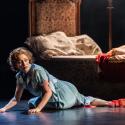


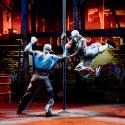



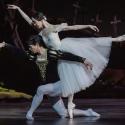

Add comment